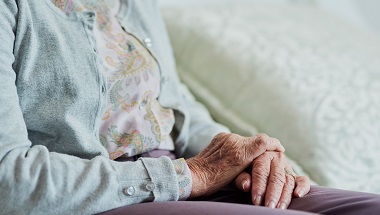National Institute for Health and Clinical Excellence (NICE)
|
|
Be aware of the signs of abuse and neglect in adult care homes, says NICE
Staff and visitors can play a vital role in the identification and prevention of abuse and neglect in care homes for adults says NICE, in a draft guideline published today.

In addition to mandatory training for staff, the guideline covers what abuse and neglect look like, how to recognise the warning signs and what actions to take if abuse or neglect is suspected. It also calls on health and social care practitioners to provide information about what abuse and neglect may look like to residents and their families and carers.
The new guideline will provide practical advice for residents, staff and anyone who spends time with adults in care homes, including family, friends or professionals who may visit.
Professor Gillian Leng, NICE chief executive, said:
“Every day, thousands of adults in care homes rely on the support and care of those around them; a fact that should never be taken for granted. This is an opportunity to equip residents, relatives and care professionals with the tools they need to identify neglect and abuse, and empower them with the knowledge of where they can go for help.
“It is our hope that by providing clear guidelines on the steps visitors, staff and organisations can take, we will all be better prepared to protect residents in their time of need.”
The new guideline differentiates between residents’ physical and emotional behaviours that are possible indicators of abuse or neglect, which should lead people to look carefully at the situation, and stronger signals that should lead people to suspect abuse and take immediate action.
Recommendations suggest that a staff member or visitor should ‘consider’ abuse or neglect in situations where there may be another possible explanation for a resident’s physical or emotional state. It says individuals should look at these signs and make judgements based on what they know about how each person usually behaves.
For instance, while there can be similarities between behaviours that are a reaction to abuse or neglect and behaviours associated with dementia, autism, learning disability or acute mental distress, the possibility of abuse or neglect should always be considered as a cause of unexplained behavioural and emotional changes.
Some examples of when individuals should consider abuse include if a resident:
- has lost or gained weight unintentionally
- uncharacteristically refuses or is reluctant to engage in social interaction
- does not have opportunities to do activities that are meaningful to them
Circumstances are also described where people should ‘suspect’ abuse or neglect, where there is no clear alternate explanation. These markers should not be seen as absolute proof of abuse, but mean immediate action is needed. These include when a care home resident:
- lives in a dirty, unhygienic or smelly environment
- is malnourished or dehydrated
- is denied independence aids (such as hearing aids, glasses or dentures), contrary to their care and support plan
Abuse can come in many forms, including physical, sexual, psychological and financial. In 2018/19 there were 415,050 safeguarding concerns of abuse and neglect of adults raised in England, an increase of 5.2% on the previous year.
Dorothy Hodgkinson, practitioner at Finding Perspectives UK, said:
“It is crucial for individuals at every level, from care home residents to every kind of care professional, to have confidence in safeguarding and the protocols to protect those within care home settings.
“This new set of NICE guidelines for safeguarding adults in care homes should help to clarify roles and improve understanding of the actions one can take against recognised abuse, and the various processes involved in addressing concerns.”
The guideline also includes recommendations on policy, training and care home culture, to help care homes improve staff awareness of safeguarding and ensure they are willing and able to report concerns when needed.
Outlining the potential indicators of abuse on both an individual and organisational level, the guideline covers the safeguarding process people should follow, from identifying a concern through to supporting people during a safeguarding enquiry.
Encouraging multi-agency involvement in safeguarding protocols and procedures, the guideline supports targets set out in NHS England’s Long-Term plan to build stronger links and consistency between care homes, primary care networks and other bodies.
A consultation on the draft recommendations is now open, with stakeholders offered the opportunity to comment until 1 October 2020.
Original article link: https://www.nice.org.uk/news/article/be-aware-of-the-signs-of-abuse-and-neglect-in-adult-care-homes-says-nice
.gif)

